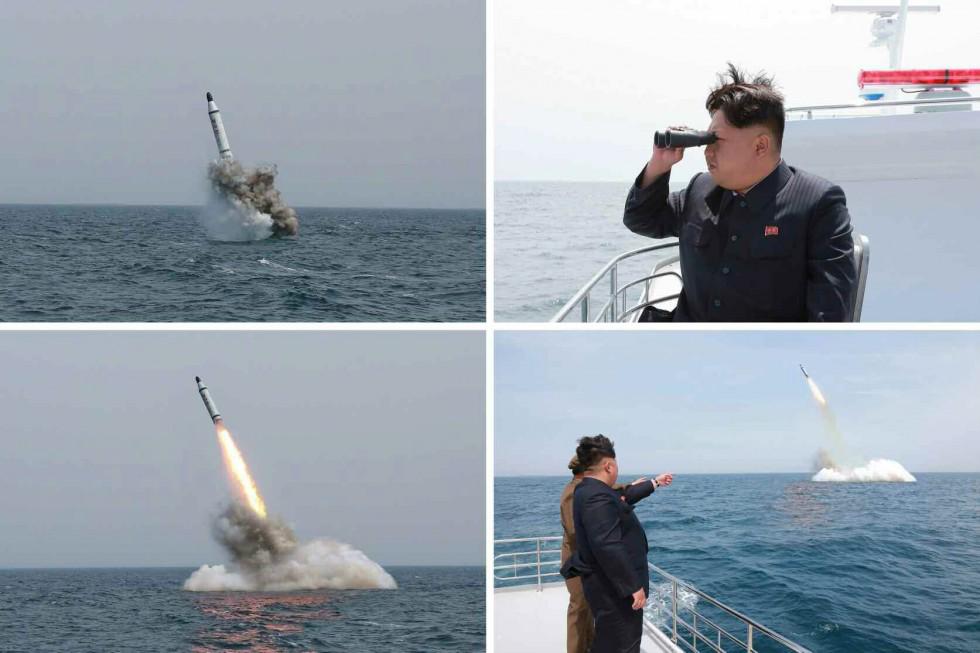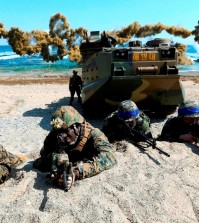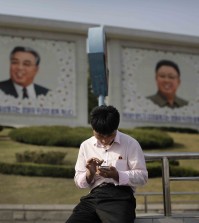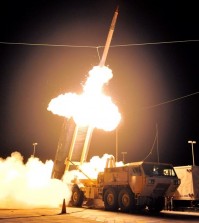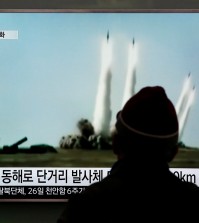- California Assembly OKs highest minimum wage in nation
- S. Korea unveils first graphic cigarette warnings
- US joins with South Korea, Japan in bid to deter North Korea
- LPGA golfer Chun In-gee finally back in action
- S. Korea won’t be top seed in final World Cup qualification round
- US men’s soccer misses 2nd straight Olympics
- US back on track in qualifying with 4-0 win over Guatemala
- High-intensity workout injuries spawn cottage industry
- CDC expands range of Zika mosquitoes into parts of Northeast
- Who knew? ‘The Walking Dead’ is helping families connect
US, S. Korea devise principles against N.Korea missiles
SEOUL, June 2 (Yonhap) — South Korea and the United States have laid out four principles of their operations to effectively counter missile threats by North Korea, U.S. Forces Korea (USFK) said Tuesday.
The principles “will guide decision-making, capability development and operations” of the allies “to counter the growing North Korean missile threat,” the USFK said in its yearly magazine titled “Strategic Digest,” published jointly by the United Nations Command and the Combined Forces Command.
The North, which has conducted three nuclear tests — in 2006, 2009 and 2013 — has continued to develop asymmetric capabilities such as ballistic missiles. Last month, it announced a successful test-launch of a submarine-launched ballistic missile, while claiming to have already secured technology for miniaturizing nuclear warheads to fit atop missiles.
According to the USFK, the first principle of the allies is “to acquire, field, and employ counter-missile capabilities” based upon their combined threat assessment of North Korean missile threats.”
The capabilities “include South Korea’s Kill Chain and Korean Air and Missile Defense System (KAMD) as well as U.S. capabilities on and off the Korean Peninsula,” it added.
Kill Chain refers to a pre-emptive strike apparatus, and the KAMD is a low-tier air defense program that South Korea has been working to develop in the face of Pyongyang’s nuclear and missile threats instead of joining the U.S.-led air defense system.
With Washington vowing to deploy its cutting-edge weapons in the Asia-Pacific region as part of its efforts to rebalance toward the region, it has expressed its will to introduce the Terminal High-Altitude Area Defense (THAAD) system on the peninsula. THAAD is designed to shoot down short, medium and intermediate ballistic missiles at a higher altitude in their terminal phase using a hit-to-kill method.
According to the second principle, the allies “will drive progress and enhance proficiency in counter-missile operations through combined exercises, training and inter-operable capabilities and refinement of procedures.”
In a move to convey their steadfast resolve and ability against the threats from the North, the two sides also vowed to boost capabilities required to implement the so-called 4D strategy, according to the USFK.
The 4D strategy, endorsed last year, postures South Korean and the U.S. “to detect, defend, disrupt and destroy” ballistic missile threats by the communist North, and the allies plan to devise operational plans based upon the strategy.
In the fourth principle, the two sides “will execute counter-missile operations based upon bilateral consultation and coordination,” according to the magazine.
Noting that Pyongyang’s continued move of developing and fielding asymmetric capabilities, the U.S. stressed the need for vigilance and readiness and vowed to continue to be “agile” to meet emerging challenges and threats.
Up to 75 percent of the North’s ground forces and some half of its air and naval assets “are within 60 miles of the demilitarized zone (DMZ)” that bisects the two Koreas, making it challenging to “assess an indication of its provocation or attack,” according to the magazine. The North has the fourth-largest military in the world.
Regarding the primary goal of the country’s regime survival, North Korean leader Kim Jong-un maintains “an extensive and capable internal security apparatus” as well as coercive diplomacy, the U.S. said, pointing to his replacement of top military leaders “with those closer to his age.”
The unruly leader of the North has often carried out public executions in what critics say is aimed at instituting a reign of terror to consolidate his grip on power that he inherited upon the death of his father and long-time leader, Kim Jong-il, in 2011. In the latest case, the North executed its defense chief, Hyon Yong-chol, in April with an anti-aircraft gun for showing disloyalty to the leader, according to Seoul’s spy agency.







